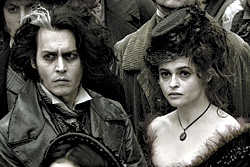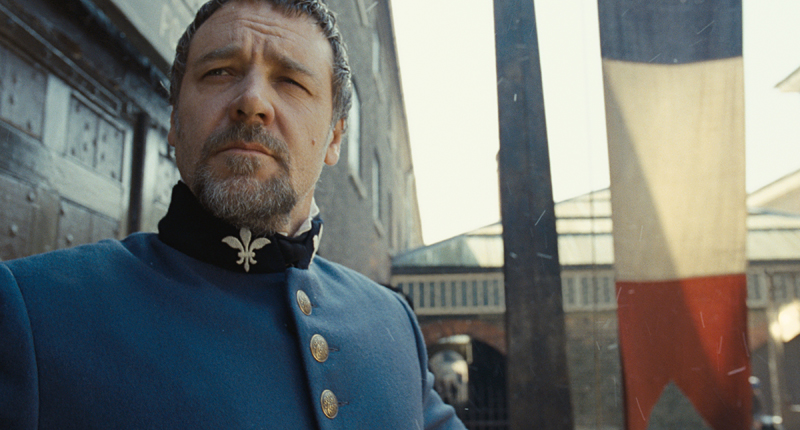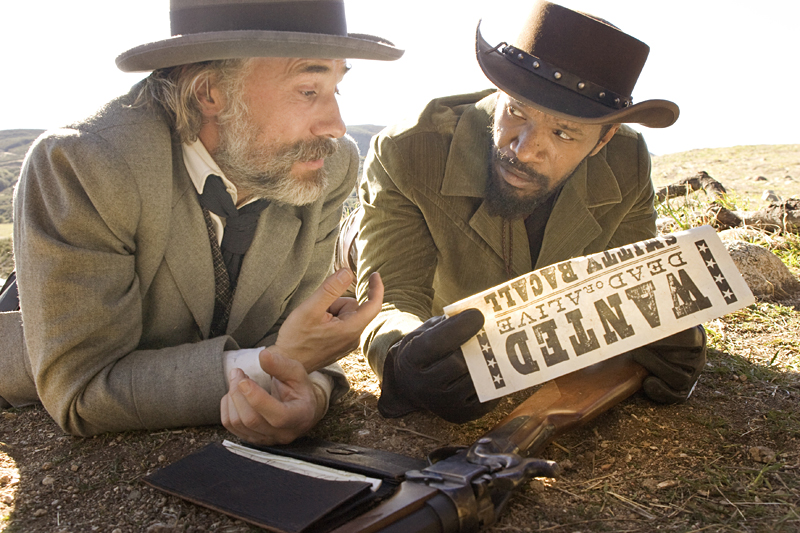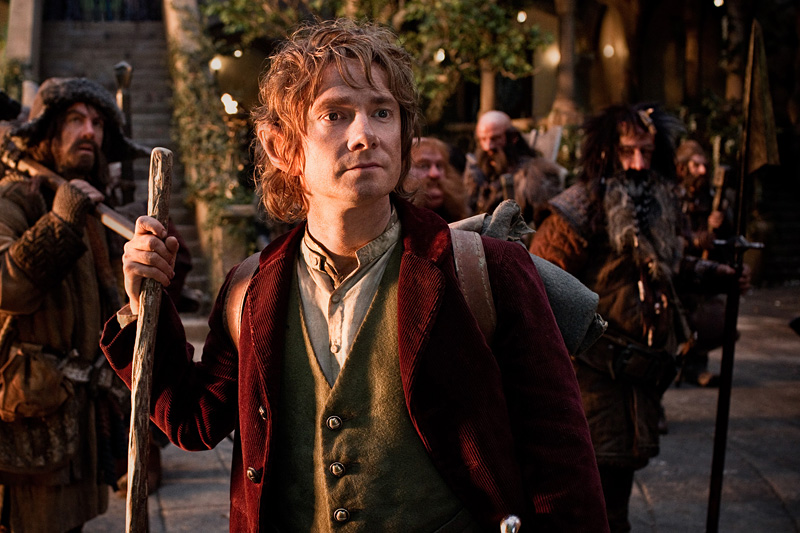Here’s the thing: Tim Burton pulled it off. Nearing the end of an uncommonly strong year for American movies, he’s taken a hallowed classic of the modern musical theater, hemmed in the narrative from well over two hours to well under, cast confessed nonsingers in the principal roles, and somehow managed to produce something magical. His Sweeney Todd: The Demon Barber of Fleet Street isn’t a groundbreaking or innovative piece of filmmaking, but it’s as fully satisfying a screen version of Stephen Sondheim and Hugh Wheeler’s Grand Guignol operetta as I can imagine. And of all the new-millennium Hollywood musicals (Moulin Rouge, Hairspray, et al.), it’s the only one that succeeds both musically and cinematically. It breathes new life into the genre by dousing it in buckets of blood.
Opening on Broadway in 1979, Sweeney Todd must have felt like a groping proletariat hand under the starched evening wear of the respectable musical crowd, what with all the pederasts, raving-mad beggar women, and enterprising cannibals parading across the stage of the Uris Theatre. Then there was Sweeney himself, the vengeful tonsorial terror, enthusiastically declaring, “They all deserve to die!” Reportedly, a good chunk of the first preview audience filed out at intermission, never to return.
Long before he came to the Great White Way, however, Sweeney Todd was a movie star. The character’s origins date back to mid-19th-century literature, but the story owes its contemporary popularization to British director George King’s 1936 nonmusical film, Sweeney Todd: The Demon Barber of Fleet Street, immortalized for its aptly-named leading man: Tod Slaughter. Back then, Sweeney Todd was still just a psycho who robbed wealthy customers of their valuables while his neighbor, the baker Mrs. Lovett, ground up their entrails into her popular meat pies. Then, in 1973, the playwright Christopher Bond (whose text served as the template for Sondheim and Wheeler) endowed Sweeney with a tragic backstory: a beautiful wife, a powerful judge who fancied her for himself, and ersatz criminal charges that earned the barber a dozen years in an Australian penal colony. Thus, from madman to misunderstood antihero.
Now Burton has given Sweeney Todd back to the movies. Nothing about the world of the film will exactly surprise connoisseurs of Burtonia—the elaborate (and partly CGI), monochromatic sets designed by Dante Ferretti could well have been constructed with odds and ends from the Sleepy Hollow prop warehouse, and the casting has more than a touch of the familiar to it. As the lovelorn Mrs. Lovett, Helena Bonham Carter is so animated, from the tips of her Bride of Frankenstein hair to the toes of her scurrying feet, you’d be forgiven for mistaking her for her stop-motion counterpart in Burton’s 2005 Corpse Bride. And when Johnny Depp, as Sweeney, swings his razor high and shouts, “At last, my arm is complete again!” we’re reminded that this isn’t the first time he’s played a social misfit with shiny metal at the end of his upper extremities.
But, like the Coen Brothers with No Country for Old Men, it’s as if working with such inviolable source material has renewed Burton and his grasp on classical film storytelling after several recent works (Big Fish, Charlie and the Chocolate Factory) that verged on the precious and self-plagiaristic. He shoots the movie almost entirely in close-up, like the silent classics, lingering lovingly (as perhaps only a Tim Burton could) on Sweeney and Mrs. Lovett’s anemic visages, and by doing so brings out an intimacy in the material that sometimes gets dwarfed on the stage. That’s especially true of the scenes between the shrewish baker woman and the young street urchin, Toby (scene-stealing Edward Sanders), whom Mrs. Lovett rescues from the clutches of the charlatan elixir-peddler Pirelli (played, in the film’s most broadly comic moments, by Sacha Baron Cohen).
Working with screenwriter John Logan (and input from Sondheim himself), Burton has also come up with inventive ways of both condensing and expanding Sweeney for the screen, elegantly shortening songs and visualizing flashback scenes that previously existed only in the audience’s imagination. Some theater purists at the press screening I attended grumbled that such devices “literalized” the play in an unfortunate manner. I would argue that, while not all perfect, they are what give the movie its cinematic brio.
If Sweeney Todd startles moviegoers today the way it did theatergoers in the ’70s, it’ll be less for Burton’s extravagantly stylized bloodletting than for the fact that the story is—unlike most movie musicals—told almost entirely through song. And not just any songs, mind you, but Sondheim’s brilliantly dissonant libretto, where burlesque ditties about cockney resourcefulness go hand in hand with arias of loneliness, despair, and blood lust. That music has been superbly reorchestrated for the film by one longtime Sondheim collaborator, Jonathan Tunick, and performed by a 64-piece orchestra under the direction of another, Paul Gemignani. And as for the singing? It’s neither brilliant nor blasphemous. Sondheim has always maintained that he prefers actors who sing to singers who act, which is what he’s gotten here in Depp (who occasionally sounds like an emo rocker when he strains to hit a difficult note) and Bonham Carter (who has the most difficult songs, and swallows some lyrics as though they were bits of Mrs. Lovett’s fresh hot pies).
No matter how hard Hollywood tries, it’s folly to think that a second golden age of the American film musical is ever going to materialize. Broadway has turned to scavenging Hollywood for ideas, while even the fearless Sondheim has segued into semiretirement. So the existence of Sweeney Todd seems all the more cause for celebration—a macabre holiday treat that not everyone in the family is sure to enjoy.








